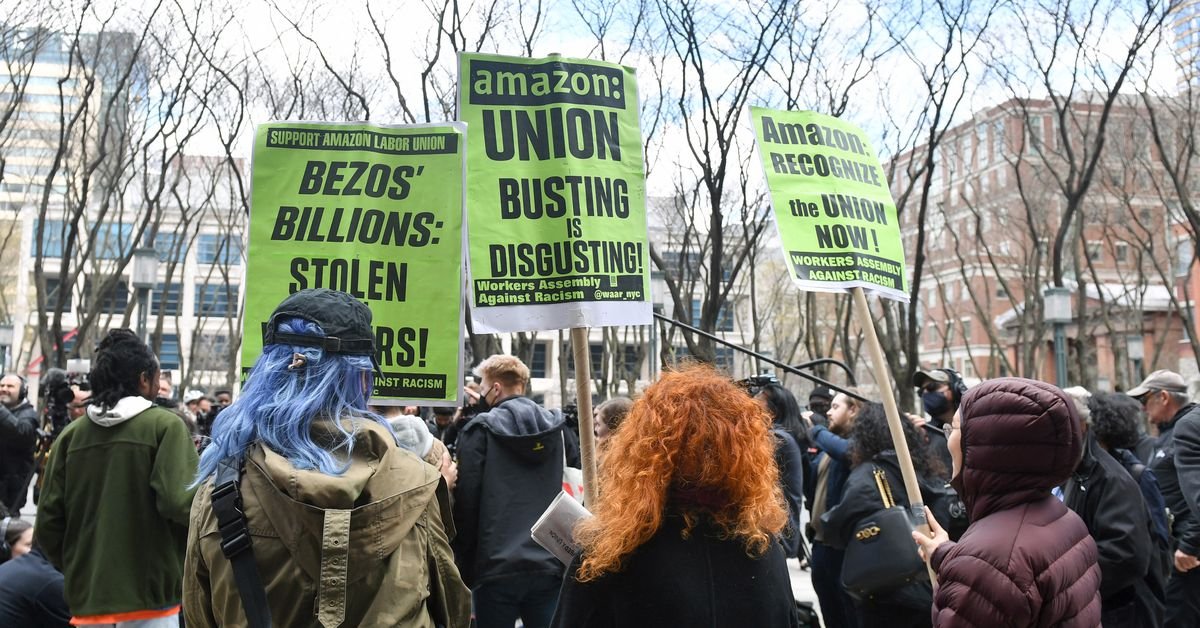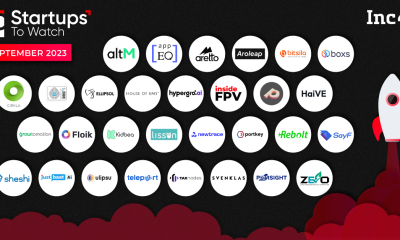Tesla’s greenhouse gas emissions grew by nearly 10 million metric tons of CO2 last year, according to the company’s latest impact report, which provides the most revealing look yet of how the company is thinking about climate-related risks and its own carbon footprint.
Science
Tesla’s wants net-zero emissions, but its pollution grew last year

In 2023, Tesla was responsible for more than 50 million metric tons of carbon dioxide emissions compared to just under 42 million metric tons the year prior, a roughly 20 percent increase in pollution. Most of the additional pollution comes from Tesla’s supply chain. Goods and services it purchased account for nearly 80 percent of the company’s overall carbon footprint.
The report says Tesla is working toward net-zero greenhouse gas emissions “as soon as possible” and outlines steps the company plans to take to get there. It also names some of the biggest risks the company faces as a result of climate change. However, it shows that the company’s supply chain has gotten dirtier over the past year.
The company’s supply chain has gotten dirtier over the past year
Since dirty supply chains often make up the biggest chunk of a company’s carbon footprint, environmental advocates are pushing regulators to crack down on those emissions. It looks as if Tesla is already taking steps to comply with new rules from the Securities and Exchange Commission that require a lot more transparency around climate change.
The SEC’s initial proposal in 2022 would have required large companies to disclose so-called indirect emissions from their supply chains and the use of their products. But that faced immediate backlash from companies saying those were the most difficult emissions to control. The measure was ultimately dropped from climate rules the SEC finalized in March.
Under those rules, which already face challenges in court, big companies will still have to divulge data on carbon pollution from their direct operations and energy use that are “material,” or essential to investors’ understanding of a company’s financial situation. They’ll also have to assess and share risks and impacts they face as a result of climate change.
Tesla conducted a sustainability assessment in 2023 “to determine areas material to the business and salient to society and the environment,” the report says. That resulted in a list of 20 “focus areas,” including climate risk management, air quality, water use, “responsible” AI, the health and safety of its workers, and more.
Drought poses the biggest risk to Tesla’s business in the short term
There’s even an entire section in the report dedicated to climate risk. Drought poses the biggest risk to Tesla’s manufacturing in the short term, it says, while heat becomes a bigger problem in the long term. After all, Tesla operates several facilities in California, Nevada, and Texas — all parched Western states grappling with rising temperatures and increasingly stressed water systems. The company says it assesses climate risks at each of its manufacturing facilities, including flooding, heavy rainfall, strong winds, extreme heat, wildfire, and drought. Those assessments will inform any plans to expand sites or design new facilities, it says.
Tesla also acknowledges in the report that it might have to change the way it does business to bring its carbon emissions down. “As regulations around GHG emissions management evolve, we may need to make further capital investments that are different from or accelerated relative to existing plans, which may impact profitability. Policy changes may impact certain practices or infrastructure, potentially reducing installed capacity because the technology used-such as with die casting or the paint shop-cannot be fully decarbonized,” the report says.
The company, of course, faces a slew of problems beyond climate change. Its sales, stock price, and staff have all dropped in numbers this year. So it won’t be easy for the company to blame lower profits on efforts to comply with climate policy.
While its carbon footprint has grown over the past year, Tesla says that doesn’t account for the pollution avoided when consumers switch from internal combustion engines to electric vehicles. Its customers avoided 20 million metric tons of CO2 pollution in 2023, Tesla estimates. And compared to automakers making gas-guzzling cars, Tesla’s carbon footprint is still much smaller. Ford’s carbon footprint, for comparison, is more than seven times larger at 386 million metric tons of CO2 in 2023.
Tesla claims that typical greenhouse gas accounting methods “weren’t built for a company like Tesla” that makes products including EVs, solar panels, and batteries that displace fossil fuels. Numbers for its greenhouse gas emissions are buried in the report’s appendix without adding up the line items to show a total for its carbon footprint. Up top, the company focuses on comparing the lifetime emissions of its EVs to internal combustion engine vehicles.
When it comes down to it, you can’t manage what you can’t measure. The data Tesla has started to share about its operations will be crucial for holding it accountable to its vision of reaching net-zero emissions. There’s still more vital information the company has to share if it’s taking climate change seriously: a concrete timeline for its efforts to slash pollution.
This seems to be the first time that Tesla has said in a report that it “strives to achieve net-zero GHG emissions across our full product lifecycle, from mining and production through use and end of life recycling.” The report also says the company plans to match 100 percent electricity use for its operations with renewable energy. (It already does this for its Supercharger network.) But the company hasn’t set a deadline for those targets and didn’t immediately respond to questions from The Verge.
Science
NASA wants SpaceX and Blue Origin to deliver cargo to the moon

The agency wants Elon Musk’s SpaceX to use its Starship cargo lander to deliver a pressurized rover to the Moon “no earlier” than 2032, while Jeff Bezos’ Blue Origin will be tasked with delivering a lunar surface habitat no sooner than 2033. Both launches will support NASA’s Artemis missions, which aim to bring humans back to the Moon for the first time in over 50 years.
Both companies are developing human landing systems for Artemis missions — SpaceX for Artemis III and Blue Origin for Artemis V. NASA later asked both companies to develop cargo-hauling variants of those landers, capable of carrying 26,000 to 33,000 pounds of equipment and other materials to the Moon.
NASA says it will issue proposals to SpaceX and Blue Origin at the beginning of next year.
“Having two lunar lander providers with different approaches for crew and cargo landing capability provides mission flexibility while ensuring a regular cadence of Moon landings for continued discovery and scientific opportunity,” Stephen D. Creech, NASA’s assistant deputy associate administrator for the Moon to Mars program, said in the announcement.
Science
Brazil leads new international effort against climate lies

Brazil and the United Nations launched a new international effort to combat disinformation on climate change. They announced the Global Initiative for Information Integrity on Climate Change during the G20 Leaders’ Summit taking place in Rio de Janeiro, Brazil.
It’s a collaboration between governments and international organizations to boost research on misinformation swirling online and around the globe that they fear could slow action on climate change. There isn’t much information available yet, but they say they’ll fund nonprofit efforts to counter that spread of lies.
“Countries cannot tackle this problem individually,” President of Brazil Luiz Inácio Lula da Silva said in a press release.
“Countries cannot tackle this problem individually.”
Only Chile, Denmark, France, Morocco, the United Kingdom, and Sweden have joined Brazil in the initiative so far. Countries that make the commitment are expected to contribute to a fund administered by the United Nations Educational, Scientific and Cultural Organization (UNESCO). The initial goal is to get more countries on board and raise $10 to 15 million over the next three years. The money is then supposed to be distributed to nonprofit organizations as grants to support research and public awareness campaigns on climate disinformation.
They haven’t yet named any specific groups they plan to work with; “calls for partnerships” are forthcoming. Some environmental organizations are already working together to study disinformation and push for measures to stop its spread, like the Climate Action Against Disinformation coalition that publishes reports on misinformation trends and advocates for more stringent content moderation.
A webpage for the new global initiative says environmental disinformation is “increasingly spreading through social media, messaging apps, and generative AI.” That has “serious” consequences, it says: “it undermines scientific consensus, obstructs authorities’ ability to respond effectively to the crisis, and threatens the safety of journalists and environmental defenders working on the frontlines.”
FEMA employees faced violent threats on social media in the aftermath of Hurricane Helene in the US, for example. Accounts spewing misinformation about the storm and FEMA were also tied to content denying climate change, according to an analysis by the Institute for Strategic Dialogue (ISD) in October. Posts baselessly accused FEMA of seizing private property and confiscating donations — lies that risked deterring storm survivors from applying for assistance, and that raised fears that FEMA staff might face attacks.
United Nations Secretary-General António Guterres also voiced his concerns during remarks today with both the G20 summit and a UN conference on climate change currently underway. “We must also take on climate disinformation,” Guterres said. “Our climate is at a breaking point.”
Science
Amazon and SpaceX attack US labor watchdog in court

Amazon and SpaceX are seeking to hamstring the National Labor Relations Board, asking a court to declare its processes for upholding labor law unconstitutional. But judges on a three-person panel appeared skeptical when the companies presented their arguments Monday.
In two separate cases before the Fifth Circuit Court of Appeals, the two companies argued that the NLRB is unlawfully forcing them to participate in administrative law proceedings over alleged anti-labor actions. The Amazon case centers around whether it’s required to bargain with the union at its JFK 8 fulfillment center on Staten Island, while the SpaceX case involves a charge by former employees who claimed they were fired after being critical of CEO Elon Musk.
A ruling in favor of the companies could undermine the NLRB’s power to enforce protections for workers. It comes just as vocal pro-union President Joe Biden is leaving office and deregulation-friendly President-elect Donald Trump takes over. Trump notably counts Musk among his chief allies after his massive fundraising push. The NLRB is an independent agency with five board members appointed by the president to 5-year terms.
During oral arguments, the judges mostly prodded attorneys on the finer points of the companies’ decisions to appeal, and the timeline of their objections. At one point, Judge James Graves Jr., an Obama appointee, expressed doubt that Amazon had even met the conditions for an appeal — suggesting it should have waited on the ruling from the district court first. Two days after Amazon’s notice of appeal, the district court denied Amazon’s request for a temporary restraining order on its NLRB proceedings.
Both companies are seeking to short-circuit the NLRB’s proceedings with a court order
George W. Bush-appointed Judge Priscilla Richman similarly pressed SpaceX’s counsel Michael Kenneally about why the company rushed to an appeal, rather than letting the case progress in a lower court. Kenneally said SpaceX waited as long as it felt it could to bring its challenge and accused the government of leaning on procedural arguments because it couldn’t defend the NLRB’s constitutionality. Graves appeared skeptical. “That sounds to me about like the argument that, ‘well, procedure doesn’t matter if I win on the merits, so just skip right over procedure,’” he said.
Both companies are seeking to short-circuit the NLRB’s proceedings with a court order, which requires demonstrating this would cause them irreparable harm. But in Amazon’s case, NLRB counsel Tyler Wiese called the company’s deadline for the district court “imaginary,” and said, “merely proceeding through an administrative process is not irreparable harm.”
Amazon and SpaceX both argue that the NLRB’s administrative proceedings are tainted because its board members or administrative law judges are unconstitutionally insulated from removal. They point to Article II of the Constitution, which says the president must “take care that the Laws be faithfully executed,” which they say includes removing officials.
Amazon also says the NLRB is violating the Seventh Amendment, which protects the right to a jury trial in certain civil cases. It argues that the NLRB shouldn’t be allowed to decide on financial remedies related to the case because it would deny the company due process. Cox said the board itself “improperly interfered with the [union] election by exercising its prosecutorial authority,” so failing to stop the proceedings would let the NLRB as as judge and prosecutor.
The NLRB says it feels confident in a 1937 Supreme Court ruling on the constitutionality of the National Labor Relations Act. “It is nothing new for big companies to challenge the authority of the NLRB to enforce workers’ rights so as not to be held accountable for their violations of the National Labor Relations Act,” NLRB General Counsel Jennifer Abruzzo said in a statement. “While the current challenges require the NLRB to expend scarce resources defending against them, we’ve seen that the results of these kinds of challenges is ultimately a delay in justice, but that ultimately justice does prevail.”
-

 Startup Stories1 year ago
Startup Stories1 year agoWhy Millennials, GenZs Are Riding The Investment Tech Wave In India
-

 Startup Stories1 year ago
Startup Stories1 year agoStartups That Caught Our Eyes In September 2023
-

 Startup Stories1 year ago
Startup Stories1 year agoHow Raaho Is Using Tech To Transform India’s Fragmented Commercial Trucking
-

 Startup Stories1 year ago
Startup Stories1 year agoMeet The 10 Indian Startup Gems In The Indian Jewellery Industry’s Crown
-

 Crptocurrency9 months ago
Crptocurrency9 months agoLither is Making Crypto Safe, Fun, and Profitable for Everyone!
-

 Startup Stories1 year ago
Startup Stories1 year agoHow Volt Money Is Unlocking The Value Of Mutual Funds With Secured Lending
-

 E-commerce1 year ago
E-commerce1 year agoTop Online Couponing Trends To Watch Out For In 2016
-

 Startup Stories1 year ago
Startup Stories1 year agoWhy Moscow-Based Kladana Considers Indian SME Sector As The Next Big Market For Cloud Computing




